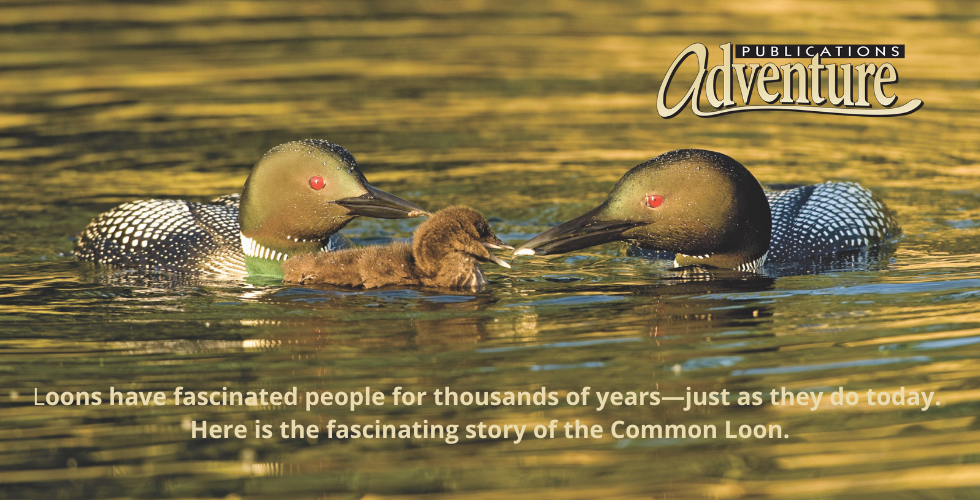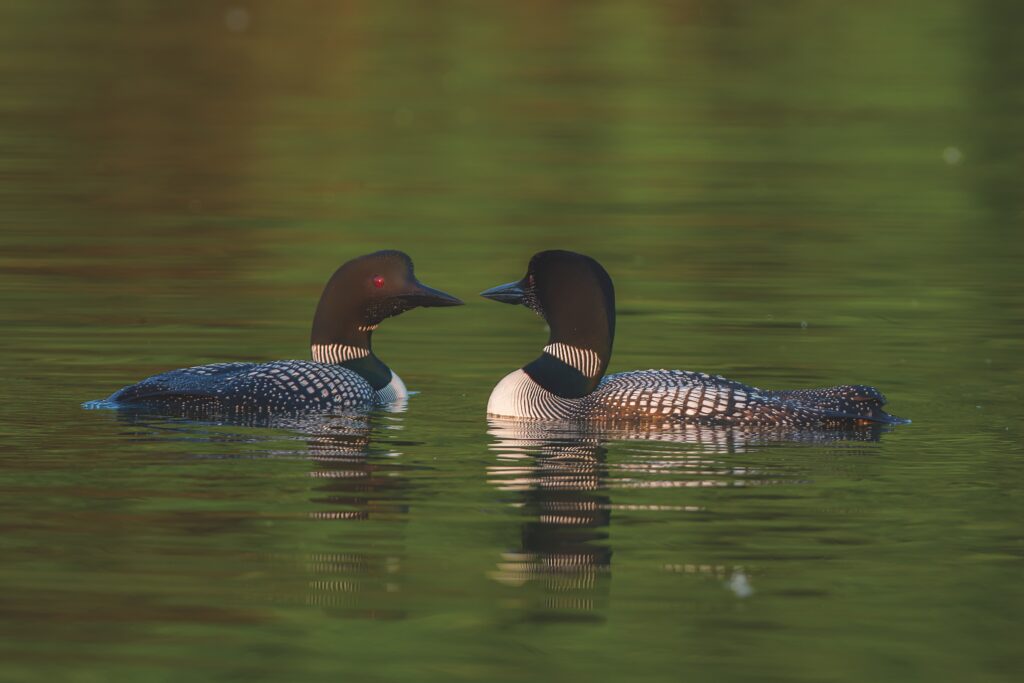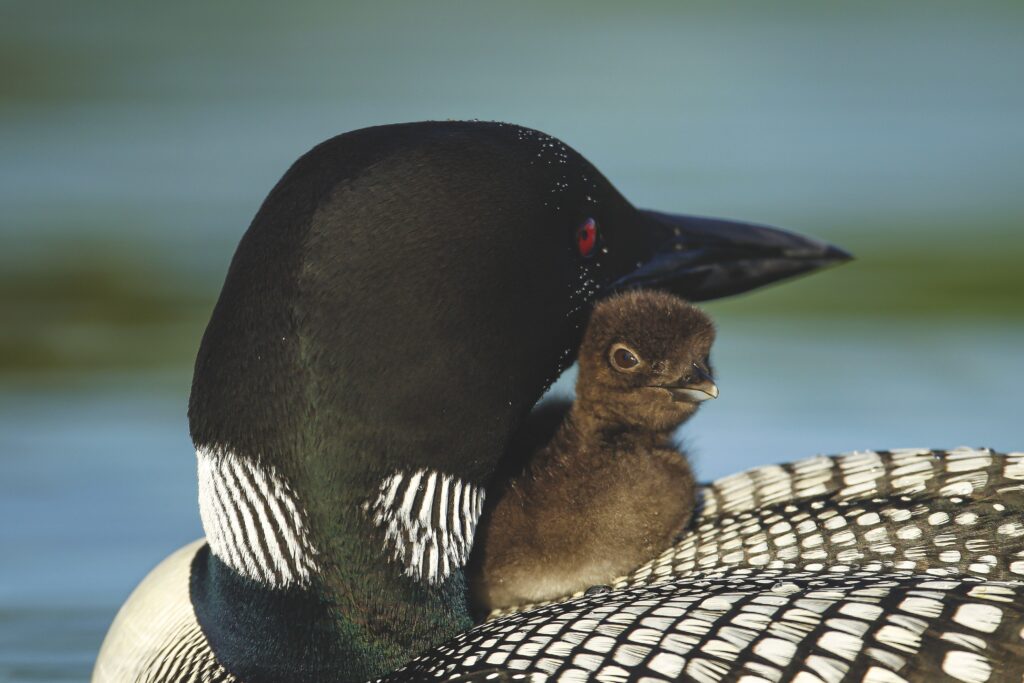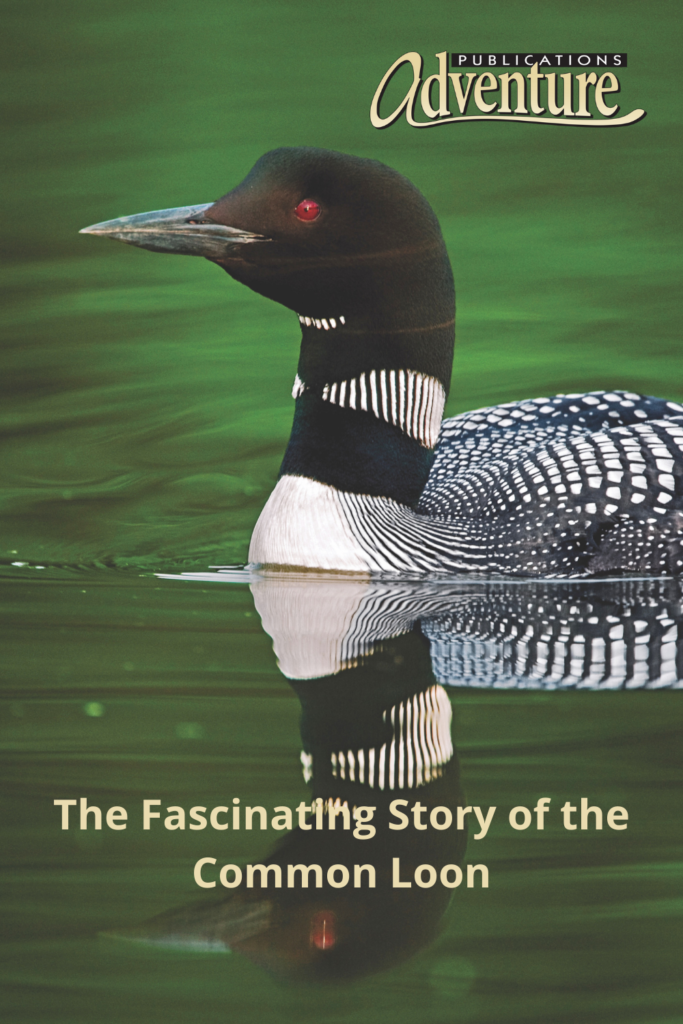
The Fascinating Story of the Common Loon
The striking black-and-white breeding plumage and deep red eyes of the Common Loon befit its elegance and grace. Loons are physically amazing, with large, powerful feet that propel the birds underwater at speeds fast enough to overtake fish. They have wings capable of carrying them thousands of miles to wintering grounds and back again with the changes of the seasons. The call of the loon catapults our memories to a time spent camping or brings to mind a lakeside summer vacation. Yes, loons have fascinated people for thousands of years—just as they do today. Here is the fascinating story of the Common Loon.

The Origins of the Scientific Name
In 1758, Linnaeus, the father of the genus and species naming systems, gave loons and grebes one genus name, Colymbus, from the Greek word kalymbis, meaning “diving bird.” The British insisted on calling the genus Colymbus, while the Americans wanted separate names to reflect the differences between loons and grebes. The dispute was resolved in 1789 when the International Commission of Zoological Nomenclature abolished the name Colymbus and called the loon genus Gavia, Latin for “aquatic bird,” crediting the name to German naturalist Johann Reinhold Forster. Forster traveled around the world with Captain James Cook in the 1700s and recorded many species, including the loon.

The species name of the Common Loon, immer, is from the Latin immergo, meaning “to immerse” or “to submerge.”
Myths of the Creation
Several native cultures tell stories of how the loon was created. According to one, the loon and the crow were once men. They were good friends and did everything together. One day they decided to go fishing. One of the men caught lots of fish. The other man caught none. The man who had no fish became so upset that he hit his friend, cut out his tongue and threw him overboard. The Great Spirit felt sorry for the beaten man and turned him into a beautiful loon, while his friend was turned into a crow.

A story from Finnish culture tells us when the first loon was created, it didn’t have legs or feet. Nature realized its mistake and flung a pair of legs and feet at the bird as it was leaving, which is why the legs and feet are located so far back on the loon’s body.
Folklore of the Necklace
Loons have played a part in the lives of native peoples around the world. Many ancient cultures have stories and myths about loons. There are various folktales about loons restoring sight to blind children or healing the failed sight of medicine men. Legend has it that a loon would carry an afflicted person on its back to the bottom

of a lake, once, twice, again and again until enough water washed over the person’s eyes to restore his or her eyesight. It has been said that a grateful person made the loon a gift of thanks—a necklace of white shells—and hung it around the loon’s neck for all to see. To this day, all loons wear a necklace of white plumage resembling the strand of white shells given in gratitude long ago.
The Lore of the Call
A story about the loon’s call comes from Micmac Indian culture. A man named Glooscap came to visit the Micmac tribe one day. The people enjoyed his company so much, they did not want him to leave. Even so, after a few days he had to move on. Because the Micmacs were so lonely, Glooscap appointed Kwee-moo, the loon, as his special messenger. Glooscap said he would return whenever the loon called because his call could be heard from far away. Today we know that special call as the wail of the loon.

Down through history it was thought that loons could predict the coming of rain. Some cultures believed the call of a loon triggered rain. These notions are why the loon is also called the Rain Crow.
More recently, the peculiar laughing call of the loon led to the phrase “crazy as a loon.”
About the author: Naturalist, wildlife photographer, and writer Stan Tekiela has written more than 175 field guides, nature books, children’s books, wildlife audio CDs, puzzles, and playing cards, presenting many species of birds, mammals, reptiles, amphibians, trees, wildflowers, and cacti in the United States. With a Bachelor of Science degree in Natural History from the University of Minnesota and as an active professional naturalist for more than 25 years, Stan studies and photographs wildlife throughout the United States and Canada. He has received various national and regional awards for his books and photographs.
Also a well-known columnist and radio personality, Stan’s syndicated column appears in more than 25 newspapers, and his wildlife programs are broadcast on a number of Midwest radio stations. Stan can be followed on Facebook and Twitter. He can be contacted via www.naturesmart.com.
You also may enjoy An Asylum of Loons, a multitude of collective nouns for specific types of birds.
If you enjoyed the fascinating story of the common loon and would like more stories about wildlife and nature, sign up for our newsletter now!


